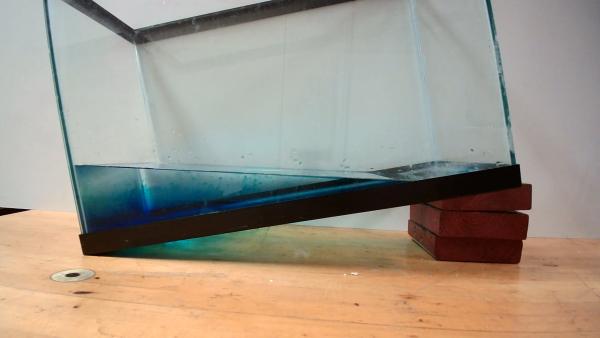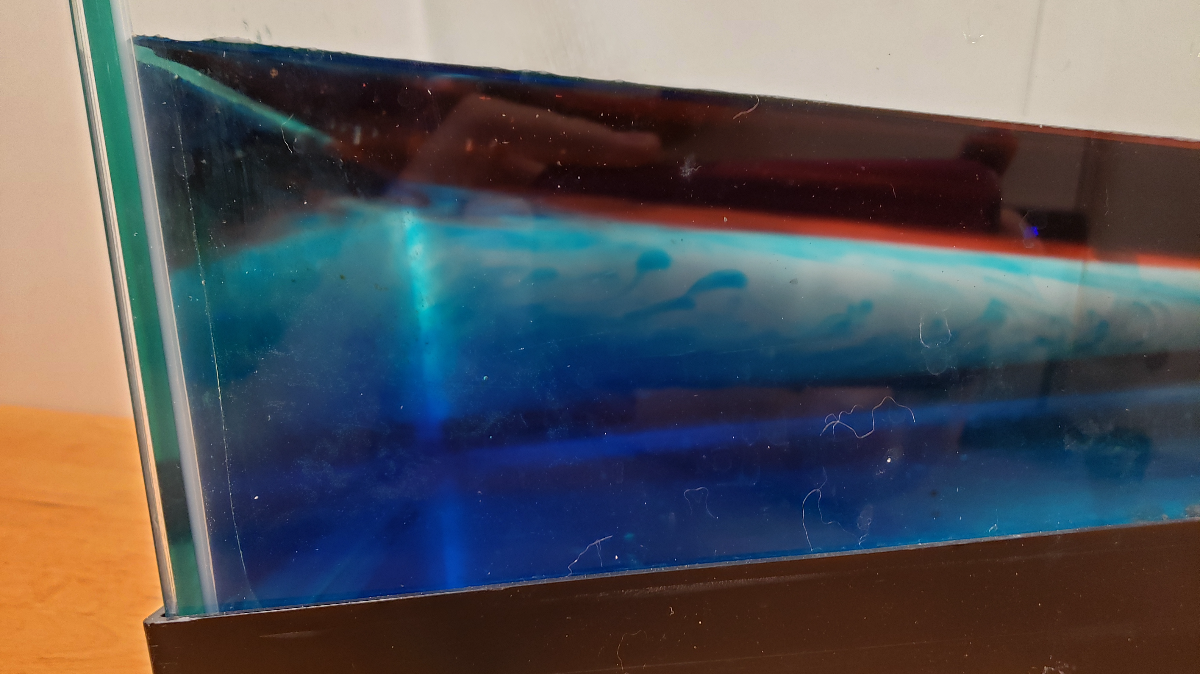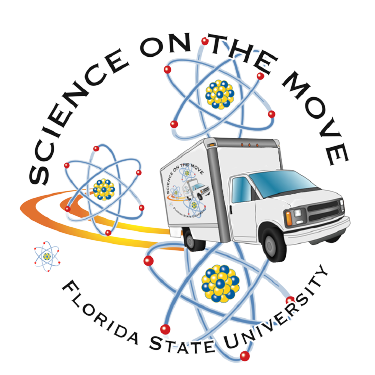Overview
Ocean currents provide a framing for this investigation, that uses hot and cold water to spark ideas about fluid density. Students make predictions, observations and explanations about the density currents they create in a container model of the ocean. The link between density and temperature is then further unpacked by considering icebergs melting and the interaction between river and ocean water.
- Grades 4-8
- In person and virtual visit options available.
- For in person visits, access to a water supply, ice, and a power outlet are required.
- For virtual visits, the Science on the Move staff will set up the tank and manipulate the tank (in real time). Instructions for how to set-up the tank in the classroom can also be shared.
Ocean currents provide a framing for this investigation, that uses hot and cold water to spark ideas about fluid density. Students make predictions, observations and explanations about the density currents they create in a container model of the ocean. The link between density and temperature is then further unpacked by considering icebergs melting and the interaction between river and ocean water.
- Grades 4-8
- In person and virtual visit options available.
- For in person visits, access to a water supply, ice, and a power outlet are required.
- For virtual visits, the Science on the Move staff will set up the tank and manipulate the tank (in real time). Instructions for how to set-up the tank in the classroom can also be shared.
Materials
-
Yellow, green, blue and red food coloring
-
Room temperature water
-
Ice-cold water
-
Hot water
-
1 clear rectangular container (approximately the size of a shoe box)
-
Book(s) or block of wood (to prop up container)
-
2 measuring cups (or beakers)
-
1 teaspoon
-
Insulating gloves (to handle hot water container)
-
Turkey baster (not necessary but advised)
-
Yellow, green, blue and red food coloring
-
Room temperature water
-
Ice-cold water
-
Hot water
-
1 clear rectangular container (approximately the size of a shoe box)
-
Book(s) or block of wood (to prop up container)
-
2 measuring cups (or beakers)
-
1 teaspoon
-
Insulating gloves (to handle hot water container)
-
Turkey baster (not necessary but advised)
Follow Up and Resources
This can be an effective launch point for discussion of other topics such as convection currents or the links between climate and the ocean. There are also some beautiful visualizations of ocean currents from NASA, as well as an interactive simulation. Check out the following for more information.
-
Our convection currents investigation, Stormy Weather, which asks what does the inside of a hurricane look like?
-
Our oil spill investigation, You’re Oil I Need.
-
NASA Perpetual Ocean, visualization of surface flows in the ocean.
-
NASA The Great Ocean Conveyer Belt, visualization of large-scale thermohaline circulation.
-
Go With the Flow Interactive Simulation from NASA.
This can be an effective launch point for discussion of other topics such as convection currents or the links between climate and the ocean. There are also some beautiful visualizations of ocean currents from NASA, as well as an interactive simulation. Check out the following for more information.
-
Our convection currents investigation, Stormy Weather, which asks what does the inside of a hurricane look like?
-
Our oil spill investigation, You’re Oil I Need.
-
NASA Perpetual Ocean, visualization of surface flows in the ocean.
-
NASA The Great Ocean Conveyer Belt, visualization of large-scale thermohaline circulation.
-
Go With the Flow Interactive Simulation from NASA.
Standards
Earth Systems and Patterns
- SC.912.E.7.2: Analyze the causes of the various kinds of surface and deep water motion within the oceans and their impacts on the transfer of energy between the poles and the equator.
Properties of Matter
- SC.8.P.8.4: Classify and compare substances on the basis of characteristic physical properties that can be demonstrated or measured; for example, density, thermal or electrical conductivity, solubility, magnetic properties, melting and boiling points, and know that these properties are independent of the amount of the sample.
The Practice of Science
- SC.912.N.1.1:
- Review what is known in light of empirical evidence, (Examine whether available empirical evidence can be interpreted in terms of existing knowledge and models, and if not, modify or develop new models).
- Generate explanations that explicate or describe natural phenomena (inferences).
The Role of Theories, Laws, Hypotheses, and Models
- SC.3.N.3.3: Recognize that all models are approximations of natural phenomena; as such, they do not perfectly account for all observations.
- SC.6.N.3.4: Identify the role of models in the context of the sixth grade science benchmarks.
- SC.7.N.3.2: Identify the benefits and limitations of the use of scientific models.
- SC.912.N.3.5: Describe the function of models in science, and identify the wide range of models used in science.
Earth Systems and Patterns
- SC.912.E.7.2: Analyze the causes of the various kinds of surface and deep water motion within the oceans and their impacts on the transfer of energy between the poles and the equator.
Properties of Matter
- SC.8.P.8.4: Classify and compare substances on the basis of characteristic physical properties that can be demonstrated or measured; for example, density, thermal or electrical conductivity, solubility, magnetic properties, melting and boiling points, and know that these properties are independent of the amount of the sample.
The Practice of Science
- SC.912.N.1.1:
- Review what is known in light of empirical evidence, (Examine whether available empirical evidence can be interpreted in terms of existing knowledge and models, and if not, modify or develop new models).
- Generate explanations that explicate or describe natural phenomena (inferences).
The Role of Theories, Laws, Hypotheses, and Models
- SC.3.N.3.3: Recognize that all models are approximations of natural phenomena; as such, they do not perfectly account for all observations.
- SC.6.N.3.4: Identify the role of models in the context of the sixth grade science benchmarks.
- SC.7.N.3.2: Identify the benefits and limitations of the use of scientific models.
- SC.912.N.3.5: Describe the function of models in science, and identify the wide range of models used in science.




